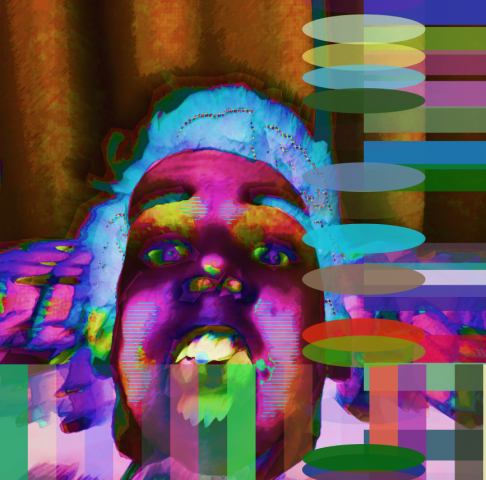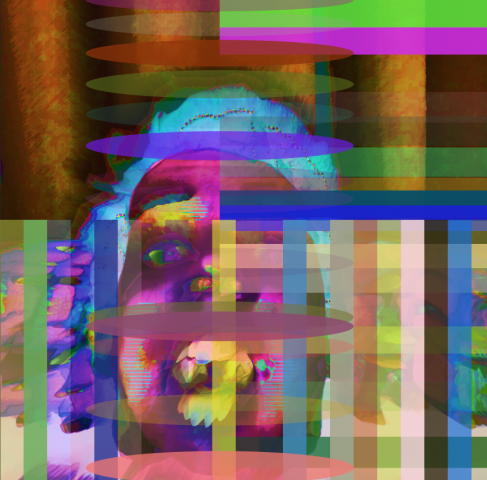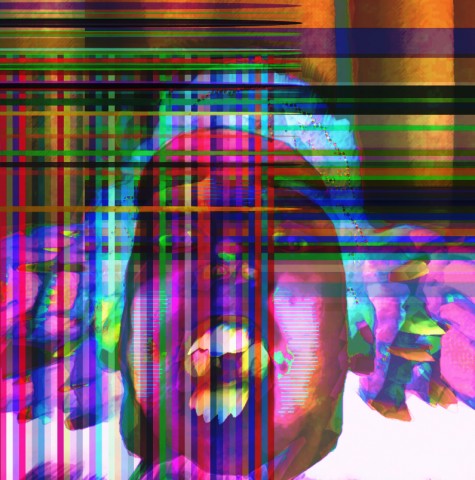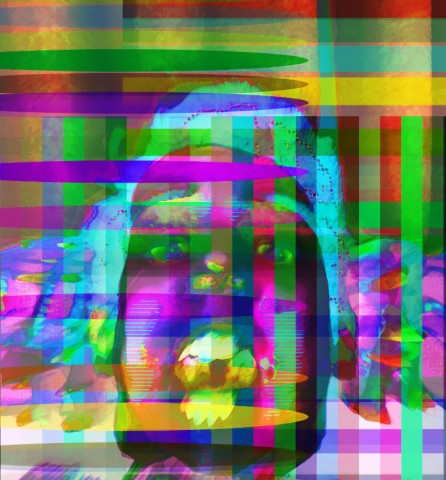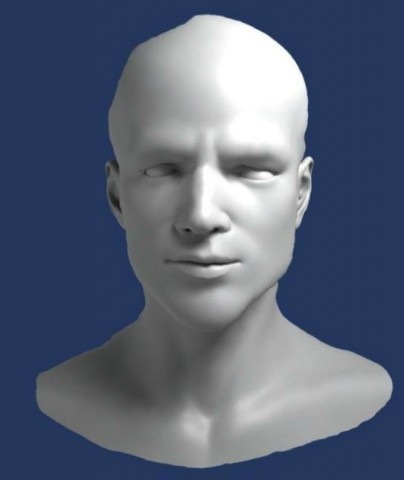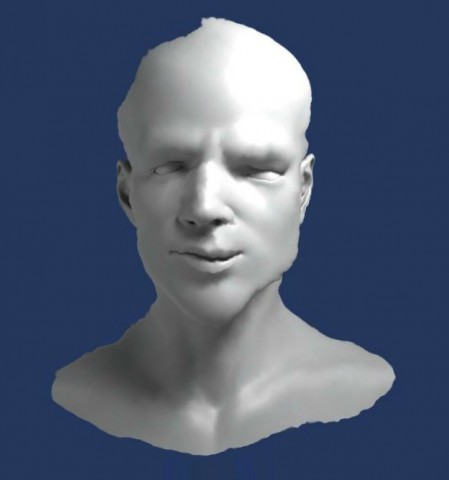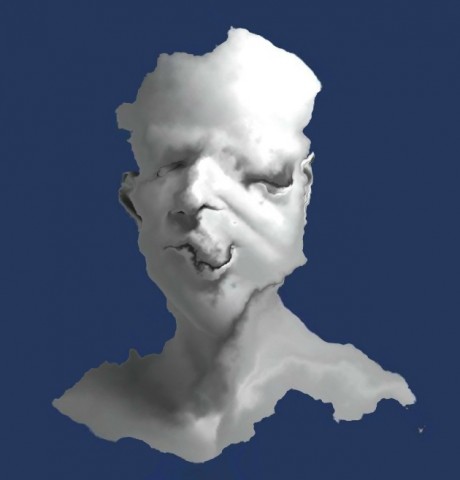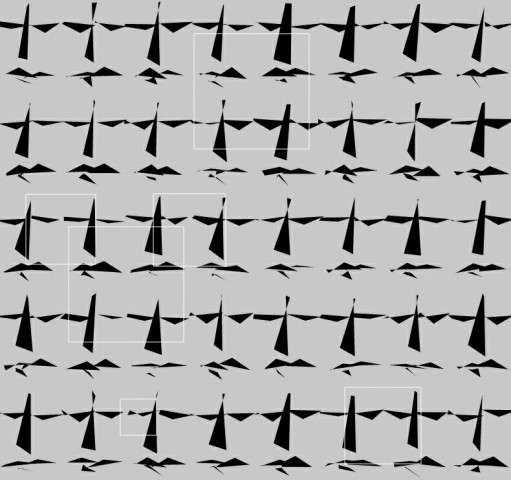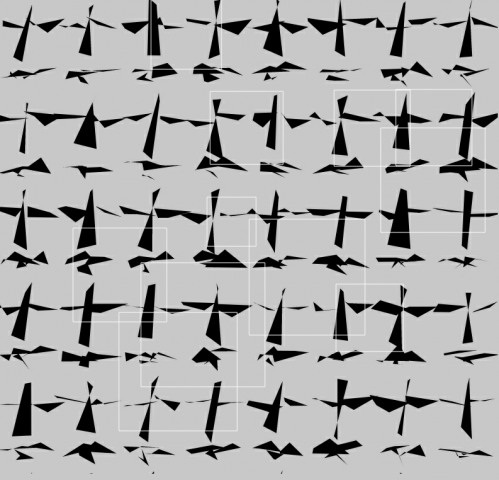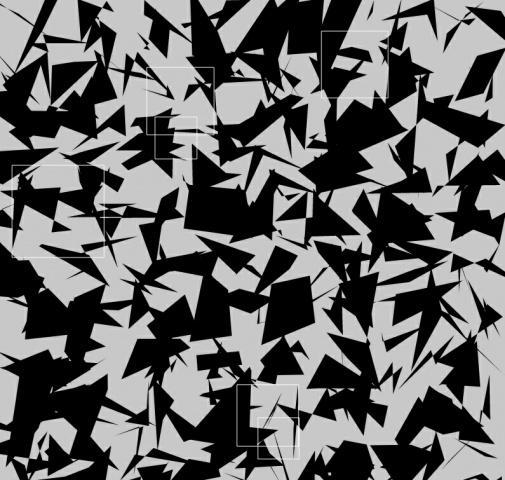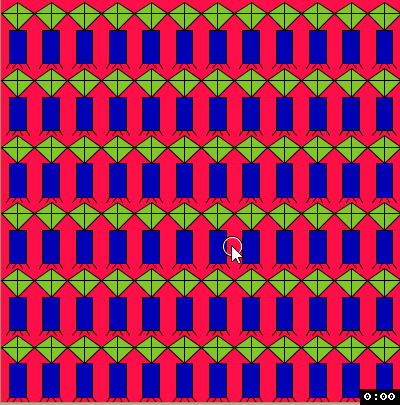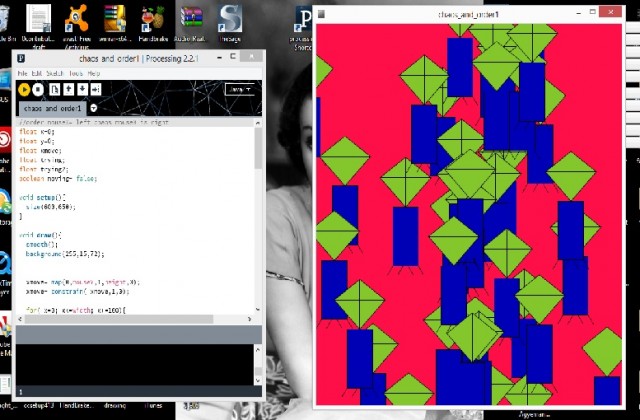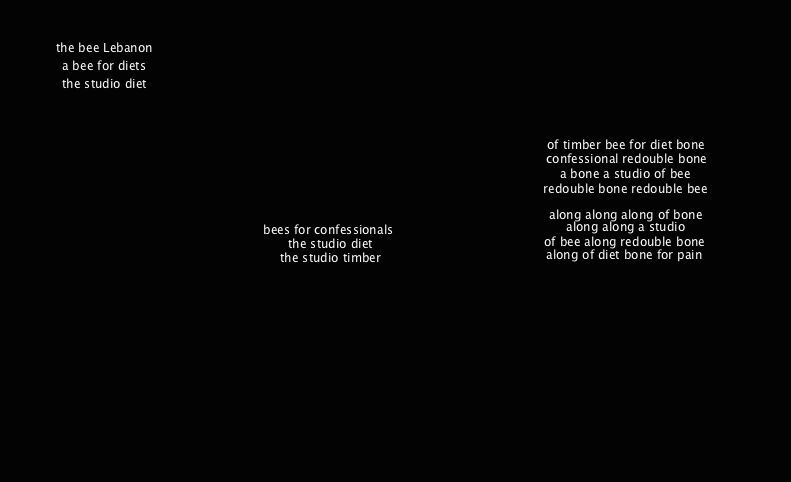
This is an experiment in generated grammar and poetics. the display is a blank black screen, and clicking generates a phrase that will slowly rise on the page. The type of phrase is based off of this, and are delineated into 3 types:
Left: A grammatically correct english phrase
Middle: a semi-random phrase in disyllabic trimeter (each line has 6 syllables).
Right: a randomised set of words that are in iambic pentameter (each line consists of 4 sets of iambs, which consist of one weak-stress syllable, and one strong-stress syllable).

//class containgng pertinent information abot a word
class Word {
String sing;
String plur;
int syllables;
int[] metre;
Word(String tempSing, String tempPlur,
int tempSyl, int[] tempMet) {
sing = tempSing;
plur = tempPlur;
syllables = tempSyl;
metre = tempMet;
}
}
// word tupole class - needed for a function return
class WordTuple {
Word x;
Word y;
WordTuple(Word tempX, Word tempY) {
x = tempX;
y = tempY;
}
}
// class that contains the phrases (built from Words) that appear
// on the display
class Phrase {
String contents;
int x;
int y;
Phrase(String tempConts, int tempX, int tempY){
contents = tempConts;
x = tempX;
y = tempY;
}
//phrases rise after generation
void update(){
y = y-1;
}
void display(){
fill(250,250,250);
textAlign(CENTER);
text(contents,x,y);
}
Boolean finished(){
return y < -50;
}
}
//word declaration - I have to hard-code the words right now,
//but processing automitically seems possible, if difficult
Word confessional;
Word studio;
Word Lebanon;
Word diet;
Word timber;
Word along;
Word bee;
Word bone;
Word of;
Word forWord;
Word a;
Word redouble;
Word[] nouns;
Word[] allWords;
//rythm patterns for iambic tetrameter and trimeter - 0 is a soft
//stress, 1 a hard stress. tetram is the only one currently in use
//since makeTrimet only follows the syllable restriuction
//Note: this is oversimplified - actually 4 levels of stress in
//english.
int[] tetramPattern = {0,1,0,1,0,1,0,1};
int[] trimetPattern = {0,1,0,1,0,1};
ArrayList<Phrase> phrases;
//makes a gramatically correct english phrase of one of a set of
//structures and randomly selected nouns
String makePhrase(){
float chooser = random(0,360);
int word1 = floor(random(nouns.length));
int word2 = floor(random(nouns.length));
String result;
if (chooser < 120) {
// a noun for noun
result = "a " + nouns[word1].sing + " for "
+ nouns[word2].plur;
} else if (chooser < 240) {
// the noun noun
result = "the " + nouns[word1].sing + " " + nouns[word2].sing;
} else {
// noun for noun
if (chooser < 300) {
result = nouns[word1].sing + " for " + nouns[word2].plur;
} else {
result = nouns[word1].plur + " for " + nouns[word2].plur;
}
}
return result;
}
//adds a word's metre to the main pattern
int[] addWord( int[] pattern, Word newWord, int patternLen){
/*println("adding" + newWord.sing +
"from " + patternLen + "to:");
printArray(pattern);*/
for(int i = 0; i < newWord.syllables; i++) {
pattern[patternLen + i] = newWord.metre[i];
}
/*println("result:");
printArray(pattern);*/
return pattern;
}
//test wether a metre pattern follows the main pattern up to
//the given size
Boolean followsMetre(int[] pattern, int[] testPattern, int size){
for(int i = 0; i < size; i++){
if (pattern[i] != testPattern[i]) {
return false;
}
}
return true;
}
//maked a nonsense iambic tetrameter
String makeTetram(){
int[] testPattern = new int[tetramPattern.length];
int[] resultPattern = new int[tetramPattern.length];
int currentLen = 0;
int tryI = 0;
int counter = 0;
String result = "";
Word tryWord;
while (currentLen < tetramPattern.length) {
tryI = floor(random(allWords.length));
tryWord = allWords[(tryI + counter) % allWords.length];
if ((currentLen + tryWord.syllables) <= tetramPattern.length){
testPattern = addWord(resultPattern, tryWord, currentLen);
if (followsMetre(tetramPattern, testPattern,
currentLen + tryWord.syllables)) {
resultPattern = testPattern;
currentLen += tryWord.syllables;
result = result + tryWord.sing + " ";
counter = 0;
} else {
testPattern = resultPattern;
}
}
counter += 1;
if (counter >= allWords.length) {
/*println(currentLen);
printArray(resultPattern);*/
return result + "pain "; //code failure
}
}
return result;
}
//chooses 2 words with total syllable cound of sylSum
WordTuple getWords(int sylSum){
Word word1 = allWords[floor(random(allWords.length))];
int[] nul = {};
Word word2 = new Word("","",0,nul);
int goalSyl = sylSum - word1.syllables;
if(goalSyl == 0){
return new WordTuple(word1, word2);
}
int tryI = floor(random(allWords.length));
for(int i=0; i < allWords.length; i++){
word2 = allWords[(tryI + i) % allWords.length];
if(word2.syllables == goalSyl){
return new WordTuple(word1, word2);
}
}
return new WordTuple(word1, word2);
}
// makes a disyllabic trimeter loosely based off of the
// phrase patterns
String makeTrimet(){
float chooser = random(0,360);
WordTuple choices;
String result;
if (chooser < 120) {
choices = getWords(4);
result = "a " + choices.x.sing + " for "
+ choices.y.plur;
} else if (chooser < 240) {
choices = getWords(5);
result = "the " + choices.x.sing + " " + choices.y.sing;
} else {
choices = getWords(5);
if (chooser < 300) {
result = choices.x.sing + " for " + choices.y.plur;
} else {
result = choices.x.plur + " for " + choices.y.plur;
}
}
return result;
}
void setup() {
//sets up words - hard coding
int[] feed4 = {0,1,0,1};
confessional = new Word("confessional",
"confessionals", 4, feed4);
int[] feed3 = {1,0,1};
studio = new Word("studio", "studios", 3, feed3);
Lebanon = new Word("Lebanon", "Lebanon", 3, feed3);
int[] feed3a = {0,1,0};
redouble = new Word("redouble", "redoubles", 3, feed3a);
int[] feed2 = {1,0};
diet = new Word("diet", "diets", 2, feed2);
timber = new Word("timber", "timber", 2, feed2);
int[] feed2a = {0,1};
along = new Word("along", "along", 2, feed2a);
int[] feed1 = {1};
bee = new Word("bee", "bees", 1, feed1);
bone = new Word("bone", "bones", 1, feed1);
int[] feed1a = {0};
of = new Word("of", "ofs", 1, feed1a);
forWord = new Word("for", "fors", 1, feed1a);
a = new Word("a", "a", 1, feed1a);
nouns = new Word[7];
nouns[0] = studio;
nouns[1] = bee;
nouns[2] = Lebanon;
nouns[3] = diet;
nouns[4] = bone;
nouns[5] = timber;
nouns[6] = confessional;
//nouns = {studio, bee, Lebanon, diet, bone, timber};
allWords = new Word[12];
allWords[0] = bee;
allWords[1] = redouble;
allWords[2] = Lebanon;
allWords[3] = of;
allWords[4] = diet;
allWords[5] = confessional;
allWords[6] = bone;
allWords[7] = forWord;
allWords[8] = studio;
allWords[9] = timber;
allWords[10] = along;
allWords[11] = a;
phrases = new ArrayList<Phrase>();
size(800,500);
frameRate(24);
/*println(makePhrase());
println("");
println(makeTetram());
println("");
println(makeTrimet());*/
}
void draw() {
background(0);
Phrase phrase;
for (int i = phrases.size()-1; i >= 0; i--) {
phrase = phrases.get(i);
phrase.update();
phrase.display();
if (phrase.finished()) {
phrases.remove(i);
}
}
}
//what kind of phrase is selected based off of the mouse position
//when clicked3
void mousePressed() {
println("mouse press:" + mouseX + "in" + width);
if(mouseX < (width/3)){
phrases.add(new Phrase(makePhrase(),mouseX, mouseY));
println("phrase added");
} else if(mouseX < 2*(width/3)){
phrases.add(new Phrase(makeTrimet(),mouseX, mouseY));
println("trimet added");
} else {
phrases.add(new Phrase(makeTetram(),mouseX, mouseY));
println("tetram added");
}
}


